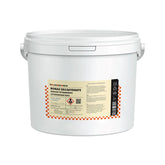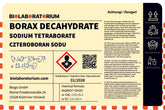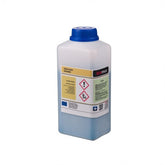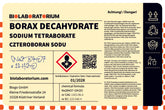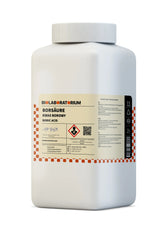Eosingelb - A versatile fluorescent dye in analytical chemistry and microscopy
Eosin Yellow, also known as Erythrosin B, is a widely used fluorescent dye employed in analytical chemistry, microscopy, and many other application areas. This article provides an overview of the properties, uses, and significance of Eosin Yellow in modern science.
The Chemistry of Eosin Yellow
Eosin Yellow is an organic compound belonging to the group of xanthene dyes. More specifically, it is a sodium salt of 2',4',5',7'-tetrabromo-4,5,6,7-tetrachlorofluorescein. The chemical structure of Eosin Yellow is characterized by an aromatic ring system with halogen substituents, which is responsible for its characteristic optical properties.
Eosin Yellow absorbs light in the visible spectrum, with an absorption maximum at approximately 525 nanometers. When the molecule is excited, it emits light in the yellow range with a maximum at 545 nanometers. This process of fluorescence is the basis for many applications of Eosin Yellow in analytics and microscopy.
Synthesis and Properties
The production of Eosin Yellow is achieved through bromination and chlorination of fluorescein, a related dye. This synthesis process results in a compound with high stability and good solubility in aqueous media. Eosin Yellow is a crystalline solid that dissolves easily in water, ethanol, and other polar solvents.
An important characteristic of Eosin Yellow is its pH dependence. The dye exhibits different absorption and emission properties depending on the environmental pH. In acidic solutions, Eosin Yellow appears reddish, while in basic media it takes on a yellow color. This property can be utilized in analytics to determine pH values.
Applications of Eosin Yellow
The versatile properties of Eosin Yellow make the dye a valuable tool in various fields of science and technology. Here are some of the key application areas:
Microscopy and Histology
In microscopy, Eosin Yellow is a widely used fluorescent dye. It is frequently employed in histology to make biological tissues visible. By binding to specific structures such as proteins or nucleic acids, Eosin Yellow emits light that can be detected under the microscope. This technique enables the high-contrast visualization of cellular structures, tissues, and even entire organisms.
Furthermore, Eosin Yellow is used in fluorescence microscopy. Here, the fluorescence properties of the dye are utilized to observe dynamic processes in living cells. For example, Eosin Yellow can be conjugated to antibodies or other biomolecules to label specific target structures and track their distribution and movement in tissue.
Analytical Chemistry
In analytical chemistry, Eosin Yellow is an important dye for various detection methods. Due to its fluorescence properties, Eosin Yellow can be used, for example, for the detection and quantification of proteins, nucleic acids, or other organic compounds.
A well-known example is the Eosin Yellow assay, which is used to determine protein concentrations in solutions. In this process, the dye binds to proteins and changes its fluorescence intensity proportionally to the protein amount. Similar methods also use Eosin Yellow for detecting DNA, RNA, or lipids.
Furthermore, Eosin Yellow is used in thin-layer chromatography. Here, the dye serves as a fluorescence indicator to make separated substances visible on the chromatogram. The fluorescence properties enable sensitive detection of even small amounts of substances.
Further Applications
In addition to the main applications mentioned in microscopy and analytics, Eosin Yellow is also used in other areas:
- As a dye in the food and cosmetics industry
- For labeling cells and tissues in cell biology
- As an indicator for pH values in chemical analyses
- In medical technology for staining tissue during surgical procedures
The versatility of Eosin Yellow is due to the unique chemical and optical properties of the dye. Due to its stability, solubility, and fluorescence activity, Eosin Yellow has established itself as an extremely useful tool in modern science.
Conclusion
Eosin Yellow, also known as Erythrosin B, is a widely used fluorescent dye with numerous applications in analytical chemistry, microscopy, and other fields. Its characteristic absorption and emission of light in the visible spectrum make Eosin Yellow a valuable tool for visualizing, detecting, and quantifying various biomolecules and cellular structures.
The versatility of the dye, its stability and solubility in aqueous media contribute to Eosin Yellow being used in numerous analytical procedures, imaging techniques, and diagnostic applications. Thus, Eosin Yellow remains an important component of modern science and research.

